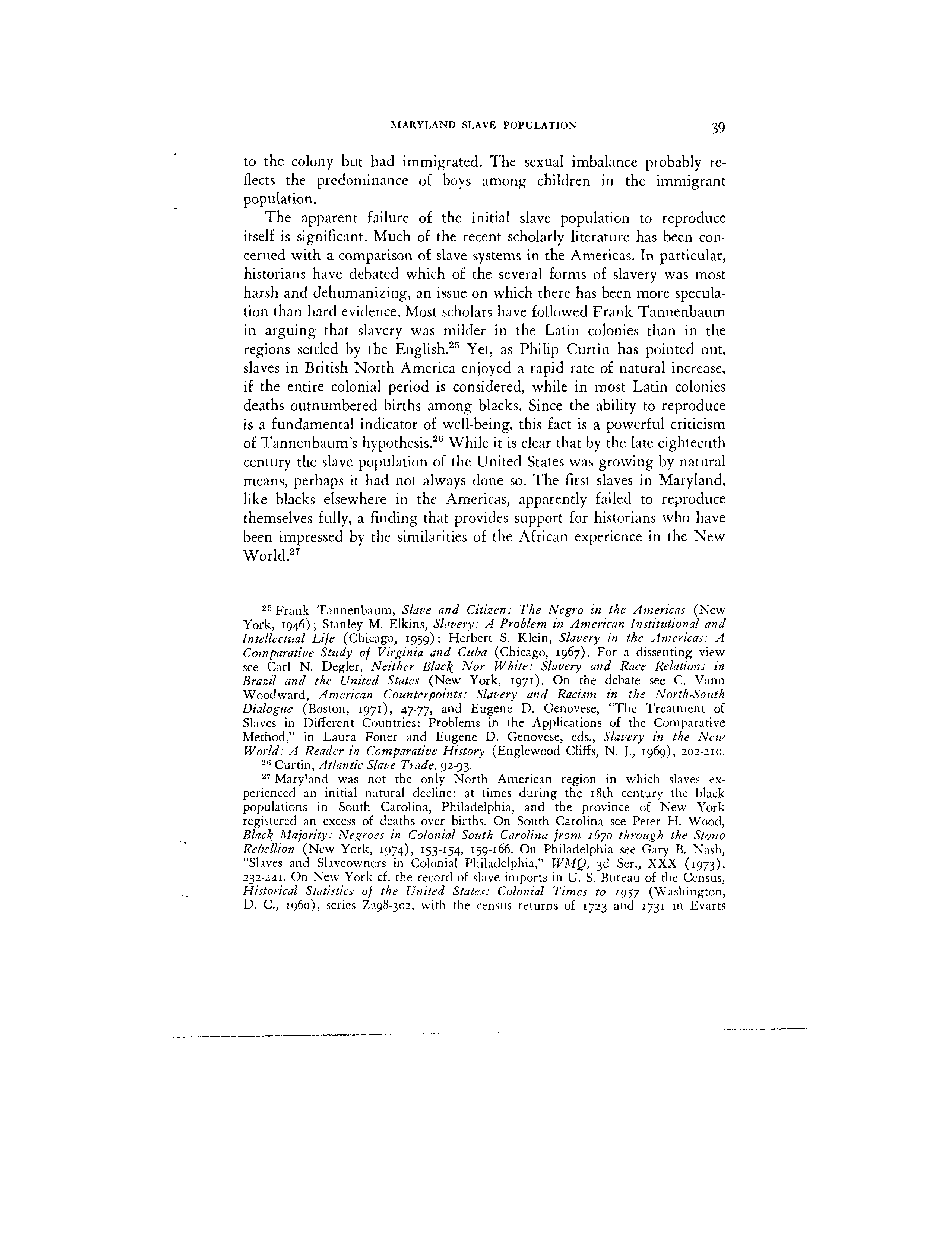|
MARYLAND SLAVE POPULATION 39
to the colony but had immigrated. The sexual imbalance probably re-
flects the predominance of boys among children in the immigrant
population.
The apparent failure of the initial slave population to reproduce
itself is significant. Much of the recent scholarly literature has been con-
cerned with a comparison of slave systems in the Americas. In particular,
historians have debated which of the several forms of slavery was most
harsh and dehumanizing, an issue on which there has been more specula-
tion than hard evidence. Most scholars have followed Frank Tannenbaum
in arguing that slavery was milder in the Latin colonies than in the
regions settled by the English.25 Yet, as Philip Curtin has pointed out,
slaves in British North America enjoyed a rapid rate of natural increase,
if the entire colonial period is considered, while in most Latin colonies
deaths outnumbered births among blacks. Since the ability to reproduce
is a fundamental indicator of well-being, this fact is a powerful criticism
of Tannenbaum's hypothesis.28 While it is clear that by the late eighteenth
century the slave population of the United States was growing by natural
means, perhaps it had not always done so. The first slaves in Maryland,
like blacks elsewhere in the Americas, apparently failed to reproduce
themselves fully, a finding that provides support for historians who have
been impressed by the similarities of the African experience in the New
World.27
25 Frank Tannenbaum, Slave and Citizen: The Negro in the Americas (New
York, 1946); Stanley M. Elkins, Slavery: A Problem in American Institutional and
Intellectual Life (Chicago, 1959); Herbert S. Klein, Slavery in the Americas: A
Comparative Study of Virginia and Cuba (Chicago, 1967). For a dissenting view
see Carl N. Degler, Neither Blac\ Nor White: Slavery and Race Relations in
Brazil and the United States (New York, 1971). On the debate see C. Vann
Woodward, American Counterpoints: Slavery and Racism in the North-South
Dialogue (Boston, 1971), 47-77, and Eugene D. Genovese, "The Treatment of
Slaves in Different Countries: Problems in the Applications of the Comparative
Method," in Laura Foner and Eugene D. Genovese, eds., Slavery in the New
World: A Reader in Comparative History (Englewood Cliffs, N. J., 1969), 202-210.
20 Curtin, Atlantic Slave Trade, 92-93.
27 Maryland was not the only North American region in which slaves ex-
perienced an initial natural decline: at times during the :8th century the black
populations in South Carolina, Philadelphia, and the province of New York
registered an excess of deaths over births. On South Carolina see Peter H. Wood,
Blacff Majority: Negroes in Colonial South Carolina from i6yo through the Stono
Rebellion (New York, 1974), 153-154, 159-166. On Philadelphia see Gary B. Nash,
"Slaves and Slaveowners in Colonial Philadelphia," WMQ, 3d Ser., XXX (1973),
232-241. On New York cf. the record of slave imports in U. S. Bureau of the Census,
Historical Statistics of the United States: Colonial Times to 7957 (Washington,
D. C., 1960), series 2298-302, with the census returns of 1723 and 1731 in Evarts
�
|

